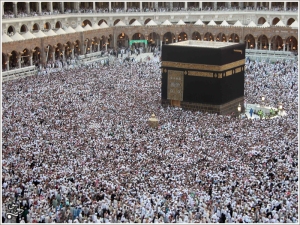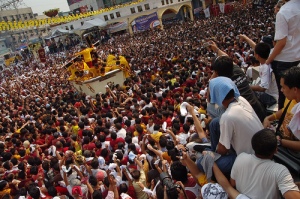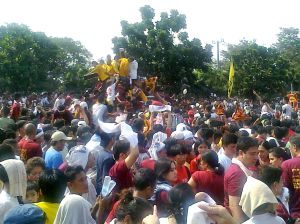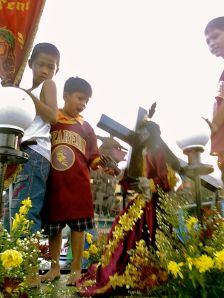Two events depict the extent Filipinos can go to show their faith: Holy Week in spring and the Feast of the Black Nazarene in January.
While the crucifixions and penitences of the first often bring out shock, it is the latter’s literal sea of humanity that lends out marvel and awe.
I call it the Philippines’ own Mecca–a mass of barefooted pilgrims in crimson shirts braving kilometers of heat and peril to reach at the ancient image of the Nazareno and tug at the thick rope leading it on.
Lay aside questions of its safety or orthodoxy. This is how devoted the Pinoy could be.
And this is how all-out the Pinoy media can cover a religious event.
With human drama, vivid imagery, and the potential for triumph and tragedy, Quiapo tugs at the heart of a largely Catholic country.
Days before, our teams already set up at Plaza Miranda and the Quirino grandstand to monitor the preparations and vigil. On the Feast day, others dot the route to track the procession. Teams at Manila Hotel and on Sky Patrol provide aerial shots.
The duty hours are long, the food comes late, and anything can happens.
Work mates tell me how they would fear for their lives inside the ENG van as the procession reaches Quiapo church. Waves of devotees would rock the van and, when it got rowdy, submerge our pickups.
My closest was along the road from Luneta to Lawton. With no reporters, we camped out there since morning just to air an hour of live video.
A dozen or so replicas filed first through the thickening throng.
You have to wonder at how this centuries-old tradition still attracts this multitude of adherents in this age of changing values. And even after the church hierarchy has discouraged such fervent acts.
There I saw the new generation join the old–from toddlers in oversized shirts to teenagers sporting the prevalent “emo” look.
Like their elders, their feet were naked and their wear blood red. And like them, the young fought with the human tide to climb on and wipe the image with a white cloth.
Thousands of such cloths sprang up and twirled from that sea as the Nazarene was heaved on.
* * * * *
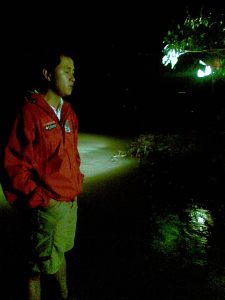
A not-so-flattering night shot of Kuya Adrian preparing for a live report from the floods of Pangasinan in Oct. 2009
This coverage also became my last with one of my favorite reporters. Adrian Ayalin recently left ABS-CBN News to work for the US Embassy’s public information office.
As a student, Kuya Adrian was who I wanted to follow if I ever landed on TV. He told great stories and told them well, whether on TV Patrol, ANC, The Correspondents, or online. Not to mention he was from UP CMC too.
I almost got to work with him when I interned for Probe. An exam stopped me from joining him on the field and I ended up editing the audio to his segment.
This job gave me my chance. I worked with him and two others in my most unforgettable coverage–the floods in Pangasinan caused by typhoon Pepeng. Adrian had me edit half his voiceover.
I didn’t direct this live VO from Quiapo. But because Kuya Adrian finished early, I got to edit the whole package before my replacement arrived.
This VO covers the montage of activity that converged around Quiapo church a day before the procession. A montage told well by this reporter.

